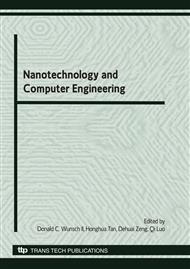p.254
p.260
p.266
p.271
p.275
p.281
p.287
p.294
p.300
Decision Making Based on Rough Set Theory and Weight Value
Abstract:
In this paper, we present a solution developed at rough set theory and weight value to make multiattribute decision with incomplete information. The paper defined the concepst of breaking points and recovered the incomplete information system according to the relationship between the condition attributes and decision attributes. And introduced OWGA(ordered weight geometric averaging) operators to calculate the aggregation value of each project. Finally, selected the project with the maximum aggregation value as the best decision making. The illustration and experiments were implemented and the results indicate that the method is effective and efficient.
Info:
Periodical:
Pages:
275-280
Citation:
Online since:
June 2010
Authors:
Keywords:
Price:
Сopyright:
© 2010 Trans Tech Publications Ltd. All Rights Reserved
Share:
Citation:


